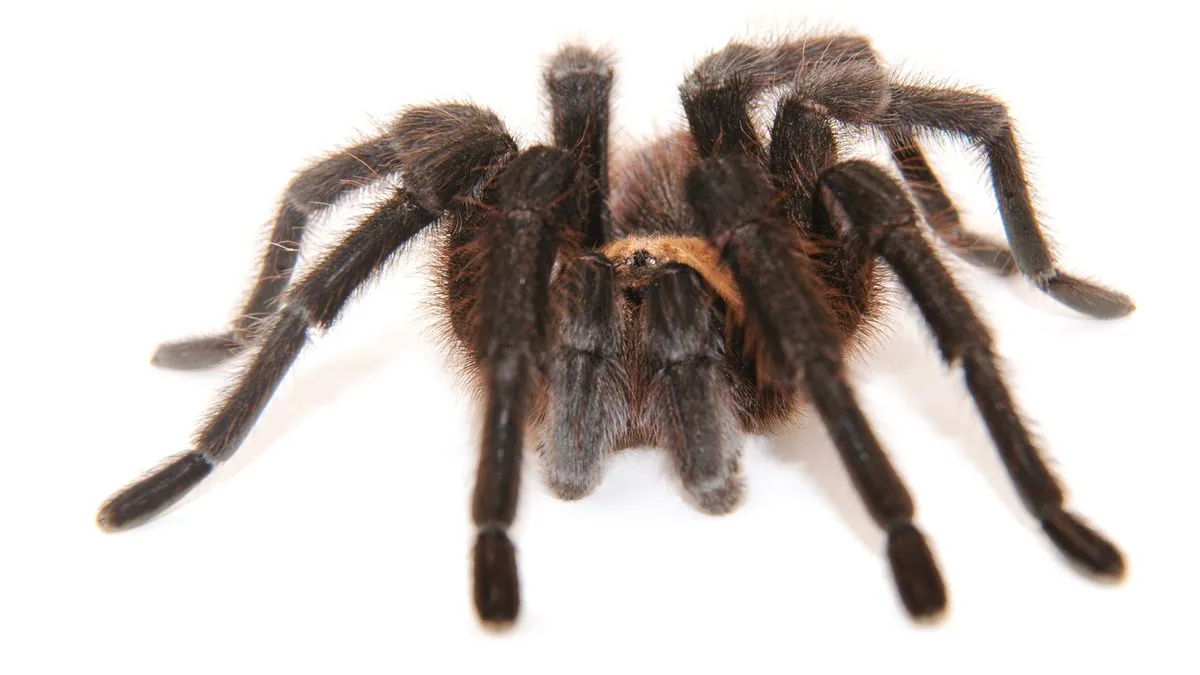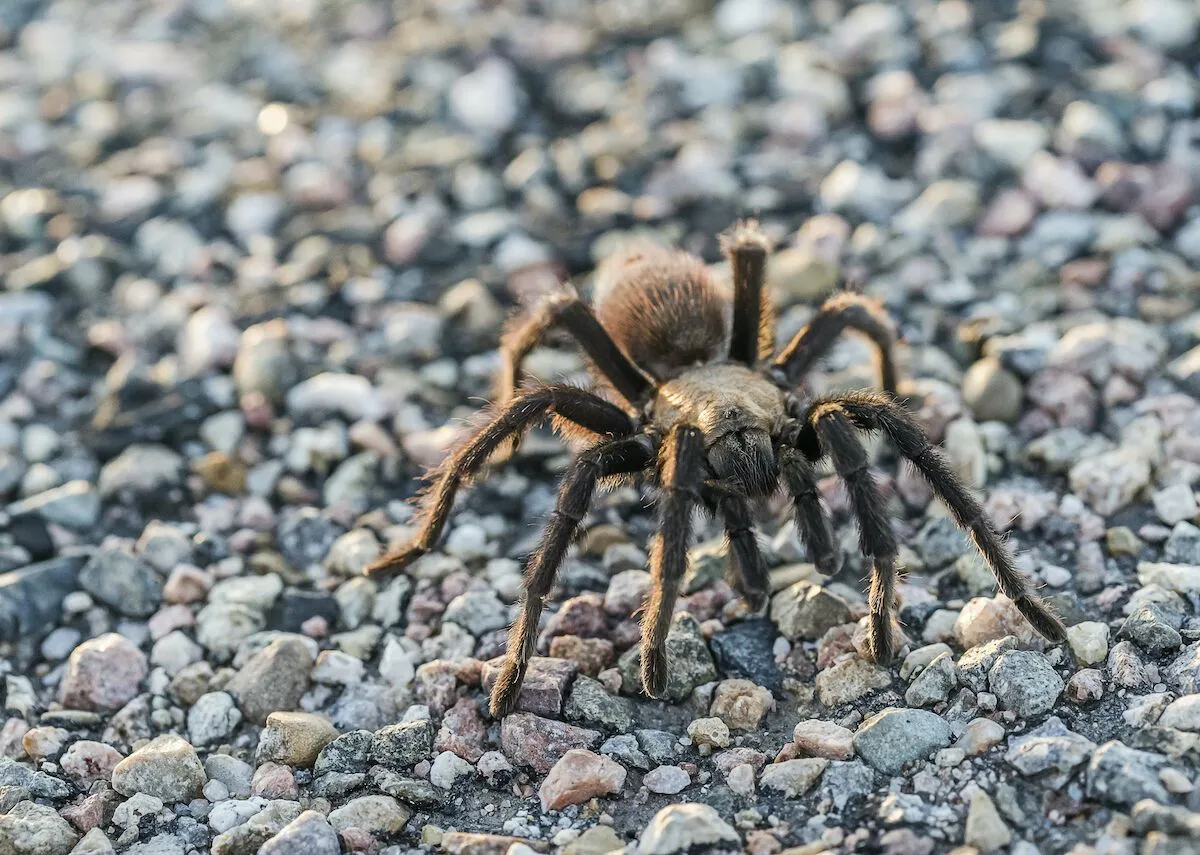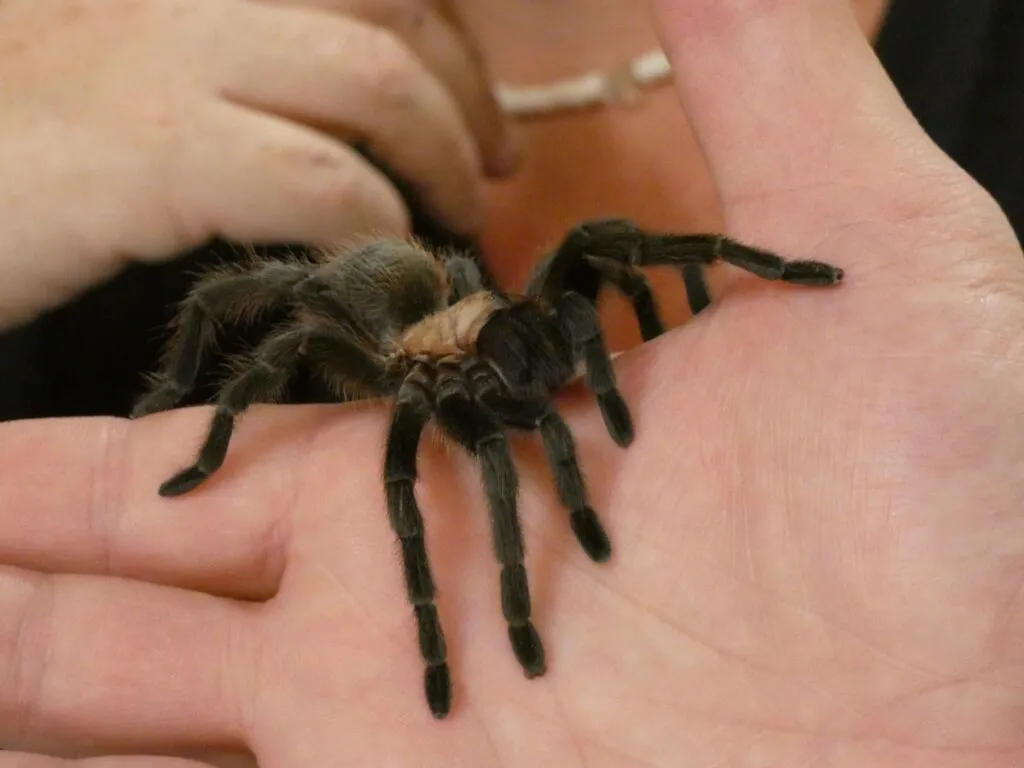Understanding Kansas Tarantulas
Kansas, often associated with vast prairies and farmlands, is also home to fascinating creatures, including the imposing tarantula. These large, hairy spiders might seem intimidating, but understanding their behavior and the role they play in the ecosystem is crucial. This guide provides essential information on identifying, spotting, and protecting yourself from tarantulas in Kansas. Whether you’re a resident or a visitor, learning about these creatures will help you appreciate the natural world and stay safe.
What are Kansas Tarantulas?
Tarantulas are large, generally hairy spiders belonging to the Theraphosidae family. In Kansas, they are primarily found in the drier, western regions. They are nocturnal hunters, typically active at night, and feed on insects, other spiders, and occasionally small vertebrates. Despite their size and fearsome appearance, tarantulas are generally not aggressive and prefer to avoid confrontation. Their venom is usually not considered lethal to humans, but their bite can be painful.
Common Species in Kansas

While several tarantula species can be found in the United States, the specific species in Kansas are often determined by their range and preferred habitat. The most commonly encountered species is the Missouri tarantula (Aphonopelma marxi), although other species might also be present. Identification often relies on size, coloration, and the presence of specific markings. Knowing the exact species can be useful, but most safety precautions remain the same regardless of the specific type.
Habitat and Behavior
Kansas tarantulas typically inhabit grasslands, open woodlands, and the edges of agricultural fields. They often construct burrows in the ground, which they may line with silk. These burrows provide shelter from the sun, predators, and harsh weather conditions. The behavior of tarantulas varies depending on the time of year and their life cycle. During mating season, males will actively search for females, which can lead to more frequent sightings. Females generally remain in their burrows except when hunting or seeking mates.
How to Spot Kansas Tarantulas
Spotting a tarantula requires some knowledge of their preferred habitats and behaviors. They are masters of camouflage and can be difficult to find during the day. The best time to look for them is at dusk or during the night, when they are most active. Knowing where to look and what signs to watch for can significantly increase your chances of spotting these fascinating creatures without putting yourself at risk.
Where to Look for Tarantulas

Tarantulas prefer areas with undisturbed soil, such as grasslands, pastures, and the edges of wooded areas. In Kansas, you may find them in the western part of the state where the climate and terrain are more favorable. Look for areas with loose soil where they can dig their burrows. Rocky areas and areas with sparse vegetation may also be good places to start your search, particularly during mating season when males are out roaming to find a mate.
Identifying Tarantula Burrows & Webs
Tarantula burrows are a clear indication of their presence. These burrows often look like small holes in the ground, usually about an inch or two in diameter. They may be surrounded by a small ring of silk and debris. While tarantulas don’t build elaborate webs like some other spiders, they do use silk to line their burrows and create trip lines to detect prey. Spotting these signs can help you avoid accidentally disturbing a tarantula’s home.
Signs of Tarantula Presence
Besides burrows, other signs can indicate tarantula activity. Look for molted exoskeletons near burrows. Tarantulas shed their exoskeletons as they grow. You might also find spiderlings or egg sacs in the vicinity, especially during breeding season. Keep an eye out for tarantulas themselves, particularly during the evening, as they may be seen crossing paths or roads. Always maintain a safe distance when you encounter one.
Protecting Yourself from Kansas Tarantulas

While tarantulas are not typically aggressive, it’s important to exercise caution when in their habitat. Knowing how to prevent bites and what to do in case of an encounter can help you protect yourself and minimize the risk of any adverse reactions. The main goal is to avoid contact and respect their space to ensure both your safety and the tarantula’s well-being.
Preventing Bites and Reactions
The best way to avoid a tarantula bite is to avoid contact. Wear closed-toe shoes and long pants when hiking or working in areas known to have tarantulas. Avoid reaching into burrows or under rocks where a tarantula might be hiding. Do not attempt to handle or provoke tarantulas. If you encounter a tarantula, observe it from a distance and allow it to move on its own. Reactions to tarantula bites vary, but the venom is generally not life-threatening. Most bites result in localized pain, redness, and swelling. If bitten, seek medical attention if symptoms worsen or if you experience any allergic reactions.
First Aid for Tarantula Bites
If you are bitten by a tarantula, remain calm and move away from the spider. Clean the bite area thoroughly with soap and water. Apply a cold compress to reduce swelling and pain. Take an over-the-counter pain reliever, if needed. Monitor for any signs of allergic reaction, such as difficulty breathing, swelling of the throat, or hives. If you experience these symptoms, seek immediate medical attention. While tarantula bites are rarely serious, it is always wise to be cautious.
Dealing with a Tarantula Encounter

Encountering a tarantula can be a memorable experience. If you see a tarantula, the best course of action is to observe it from a safe distance. Do not attempt to capture or handle it. Allow it to move away on its own. If a tarantula enters your home, carefully contain it if possible, using a container and a piece of cardboard to trap it. Then, release the tarantula outside in a safe area. If you are uncomfortable, contact a professional pest control service.
Protecting Your Home and Yard
Preventing tarantulas from entering your home and yard involves creating an environment that is less attractive to them. Simple measures can significantly reduce the likelihood of encountering these spiders near your living space. Understanding the habits of tarantulas and applying appropriate strategies will minimize your chances of a surprise encounter.
Creating a Tarantula-Unfriendly Environment
Tarantulas are attracted to areas with abundant insect populations. Reduce the number of insects in your yard by eliminating sources of standing water, which can breed mosquitoes. Keep your lawn mowed and clear away any piles of leaves or debris where insects might hide. Seal any cracks or openings in your foundation and around windows and doors to prevent spiders from entering your home. Regular yard maintenance can discourage tarantulas from taking up residence in your yard.
Safe Pest Control

If you need to control tarantulas or other pests, consider using eco-friendly pest control methods. Avoid using harsh chemicals that could harm beneficial insects and other wildlife. Consult with a pest control professional to determine the safest and most effective strategies for your specific situation. Traps can be a useful tool for capturing spiders and other pests without using harmful pesticides. Always follow the manufacturer’s instructions when using any pest control products.
Maintaining Your Property
Regular maintenance of your property can help minimize the presence of tarantulas. Inspect your home and yard regularly for signs of tarantulas or other pests. Seal any cracks or openings in your foundation and around windows and doors. Keep your yard tidy by removing piles of leaves, wood, and other debris where spiders might hide. Properly maintain your landscaping by trimming shrubs and keeping your lawn mowed. Periodic checks and maintenance create an environment less favorable for tarantulas and other unwanted creatures.
